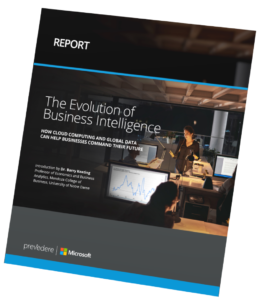Last Updated: June 22, 2018
As artificial intelligence, the IoT and technology advancements like 3-D printing shape the future of global manufacturing, the fourth industrial revolution is upon us. For global manufacturing companies, this is a time to consider their market and supply chain strategies as governments around the world introduce new initiatives in competition for global manufacturing leadership.
Considering economic volatility and unpredictable events, like BREXIT and evolving trade agreements, global manufacturing must look to the future in determining their market strategies. Internal and historical data that which drove critical decisions in the past is not the only information to rely on for today’s competitive environment. Based on current global economic trends and future projections for growth opportunities and changing demand.
5 countries the global manufacturing industry should watch
- Poland
 For more than three years, Poland has remained comfortably above the threshold that separates manufacturing expansion from contraction. As a result of high growth in employment, output and new orders, Poland’s manufacturing sector is experiencing the longest expansionary sequence of any country since June 1998 and continues to maintain growing confidence. In fact, manufacturing in Poland achieved its highest business indicator reading from the past decade in February, according to the Business Tendency Survey released by the Central Statistical Office.
For more than three years, Poland has remained comfortably above the threshold that separates manufacturing expansion from contraction. As a result of high growth in employment, output and new orders, Poland’s manufacturing sector is experiencing the longest expansionary sequence of any country since June 1998 and continues to maintain growing confidence. In fact, manufacturing in Poland achieved its highest business indicator reading from the past decade in February, according to the Business Tendency Survey released by the Central Statistical Office.
- India
According to the World Economic Forum, India’s manufacturing sector has grown by more than 7% per year on average in the past three decades. In 2017, the government announced a $59 billion investment in infrastructure as part of its “Make in India” initiative to transform the country into a global high-tech manufacturing hub. Several mobile phone, luxury and automobile brands, among others, have already started to establish their manufacturing bases in the country, home to the 2nd largest population in the world. India is expected to continue its stride as one of the fastest growing economies as the demand for Indian manufactured products is steadily increasing.
- The United Kingdom
In March, the U.K.’s Manufacturing Purchasing Managers’ Index (PMI) saw a continued jump and remains well above the 50-point threshold that separates expansion from contraction in activity in the manufacturing sector, where it has been since August 2016. To counter concerns and raise confidence post-BREXIT, the government has launched a long-term industrial strategy targeting the younger workforce. Britain is heavily investing in advancing skillsets among its workforce to help propel the country’s efforts in becoming the global leader of “the industries of the future”, signaling growth opportunities for products like self-driving vehicles.
- Singapore
Manufacturing and electronics PMIs in Singapore have steadily remained in expansionary territory, indicating sound business conditions and suggesting that industrial production will keep up pace. As rising consumer spending power drives demand in China in the coming years, Singapore’s manufacturing output is expected to grow significantly. In fact, Singapore was recently cited as the 2nd best country positioned to capitalize on the Fourth Industrial Revolution, behind the United States.
- The United States
In a report by the World Economic Forum, Which Country is Best Prepared for the Future of Manufacturing?, the United States ranked at the top in the “Drivers of Production,” which represents future readiness of countries in the manufacturing sector. From government to industry to academia, U.S. manufacturing stakeholders are developing plans to ensure that the country is on the forefront of the Fourth Industrial Revolution. For example, Apple Inc. recently announced its $5 billion advanced manufacturing investment fund. As manufacturers look to enter new markets and capitalize on growth opportunities, the United States is one country to certainly avoid overlooking.
It is impossible to make smart, strategic decisions relying exclusively on internal data in this era of fast-paced globalization. Incorporating macro and micro-economic data brings critical insight on when to enter and exit a particular market.
***
 In the Evolution of Business Intelligence report, Prevedere, an industry insights and predictive analytics company, has partnered with Microsoft and Dr. Barry Keating, professor of economics and business analytics at the University of Notre Dame, to describe the critical turning point currently facing traditional analytics, as technology and data merge to help business leaders make smarter, faster, forward-looking decisions. Read the full report >>
In the Evolution of Business Intelligence report, Prevedere, an industry insights and predictive analytics company, has partnered with Microsoft and Dr. Barry Keating, professor of economics and business analytics at the University of Notre Dame, to describe the critical turning point currently facing traditional analytics, as technology and data merge to help business leaders make smarter, faster, forward-looking decisions. Read the full report >>